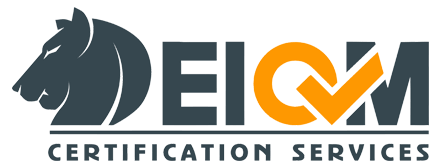Table of contents
What Does IMS Mean?
Before writing this article, I analyzed competitors targeting the keyword “استعلام گواهینامه ایزو” (ISO certificate verification) to ensure this content is unique, comprehensive, and optimized for position zero (featured snippet). Below is a summary of key insights from competitor analysis:
IMS stands for Integrated Management System. It’s a system that combines multiple aspects of an organization’s performance—often governed by different ISO standards—into one cohesive framework. Instead of maintaining separate systems for quality, environment, health, safety, and security, IMS blends them so your processes, goals, and documentation all point in the same direction.
At its core, IMS is all about efficiency and alignment. It recognizes the overlap between ISO standards (like ISO 9001, ISO 14001, and ISO 45001) and merges them into a system that’s easier to manage, audit, and improve. Think of it as a “one ring to rule them all” approach for organizational management. The structure is built around shared processes, unified objectives, and coordinated planning, which makes it far easier to adapt to new standards or regulatory requirements as your business evolves.
IMS isn’t just for compliance—it’s a strategy. By uniting these systems, you create synergy across departments. Everyone from top management to frontline employees works within a singular vision, leading to better outcomes and a stronger business culture.
Importance of IMS in Modern Organizations
In today’s competitive markets, businesses face pressure from all angles—legal requirements, customer expectations, environmental regulations, and workforce safety concerns. Each of these areas usually comes with its own set of compliance requirements, many of which are ISO-based. Without IMS, companies often end up managing these requirements separately, leading to duplicated efforts, inefficiencies, and even conflicts between departments.
IMS solves that problem by acting as the glue that binds all these components together. Here’s why that matters:
-
Consistency: Everyone follows the same policies and procedures, reducing errors and miscommunication.
-
Simplification: One system means fewer documents, clearer responsibilities, and streamlined audits.
-
Improvement: Data from different departments flows into a single improvement loop, allowing for smarter decisions and faster innovation.
By adopting IMS, businesses position themselves not just for compliance—but for sustainable success.
Key ISO Standards in IMS
ISO 9001 – Quality Management System
ISO 9001 is arguably the backbone of any IMS. It focuses on delivering consistent quality that meets customer expectations. It brings a structured approach to documenting processes, setting quality objectives, and continuously improving performance. In an IMS, ISO 9001 plays the role of ensuring that quality isn’t just a department—it’s a culture.
When integrated into IMS, ISO 9001 aligns with environmental and safety standards to ensure quality doesn’t come at the expense of sustainability or worker health. This integrated approach leads to more balanced decisions and holistic performance.
ISO 14001 – Environmental Management System
ISO 14001 helps organizations manage their environmental responsibilities. It covers areas like energy use, waste management, pollution control, and compliance with environmental laws. In isolation, managing this can be overwhelming. But in an IMS, it aligns with business objectives and quality goals.
When ISO 14001 is part of IMS, companies are able to reduce their environmental footprint while maintaining quality and safety standards. This reduces operational risks, saves costs, and strengthens the brand image among environmentally conscious customers.
ISO 45001 – Occupational Health and Safety
ISO 45001 focuses on providing a safe and healthy workplace. It outlines processes for identifying risks, preventing injuries, and ensuring legal compliance regarding worker safety. Within IMS, it ensures that safety is embedded in every process—whether it’s in product development, facility maintenance, or employee training.
Integrating ISO 45001 in an IMS creates a culture where safety and productivity coexist. Employees feel more secure, leading to better morale, lower absenteeism, and fewer incidents.
Optional Standards to Integrate (ISO 27001, ISO 50001)
Beyond the core trio, organizations can integrate standards like:
-
ISO 27001: Focused on information security. Ideal for IT, finance, and any data-sensitive industries.
-
ISO 50001: Targets energy efficiency. Excellent for manufacturers and large-scale operations looking to reduce energy costs and carbon footprint.
These standards, when integrated into the IMS framework, offer deeper control and visibility across all critical areas of operation.
Benefits of Implementing IMS
Implementing an IMS offers several strategic advantages:
-
Enhanced Efficiency: By unifying management systems, organizations reduce duplication of efforts and streamline processes.
-
Improved Compliance: A cohesive system ensures consistent adherence to various regulatory and standard requirements.
-
Cost Reduction: Integrated audits and processes lead to significant cost savings.
-
Risk Mitigation: A unified approach enhances the organization’s ability to identify and manage risks effectively.
-
Continuous Improvement: IMS fosters a culture of ongoing improvement across all integrated systems.
Implementing IMS: A Step-by-Step Guide
-
Assessment: Evaluate existing management systems and identify areas for integration.
-
Planning: Develop a comprehensive plan outlining integration strategies and objectives.
-
Training: Educate employees on IMS principles and their roles within the integrated system.
-
Integration: Align processes, procedures, and documentation across all systems.
-
Monitoring and Review: Regularly assess the IMS’s performance and make necessary adjustments for continual improvement.
Why Choose EIQM Cert for IMS Certification?
At EIQM Cert, we specialize in providing comprehensive IMS certification services. Our expertise ensures that your integrated management system aligns with international standards, enhancing your organization’s credibility and performance. Partner with us to achieve a streamlined, efficient, and compliant management system.
